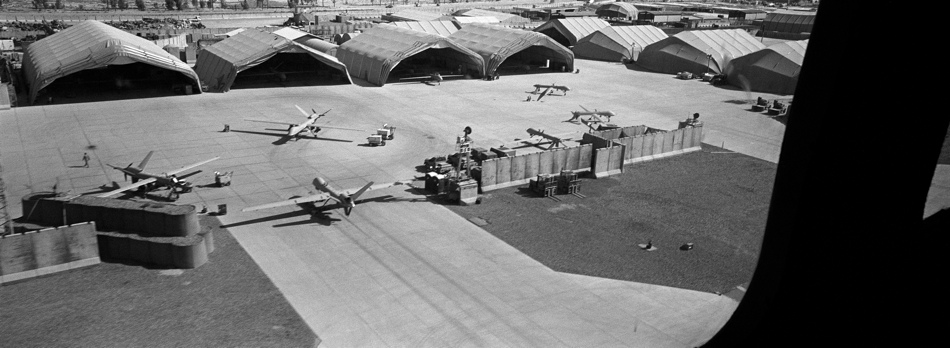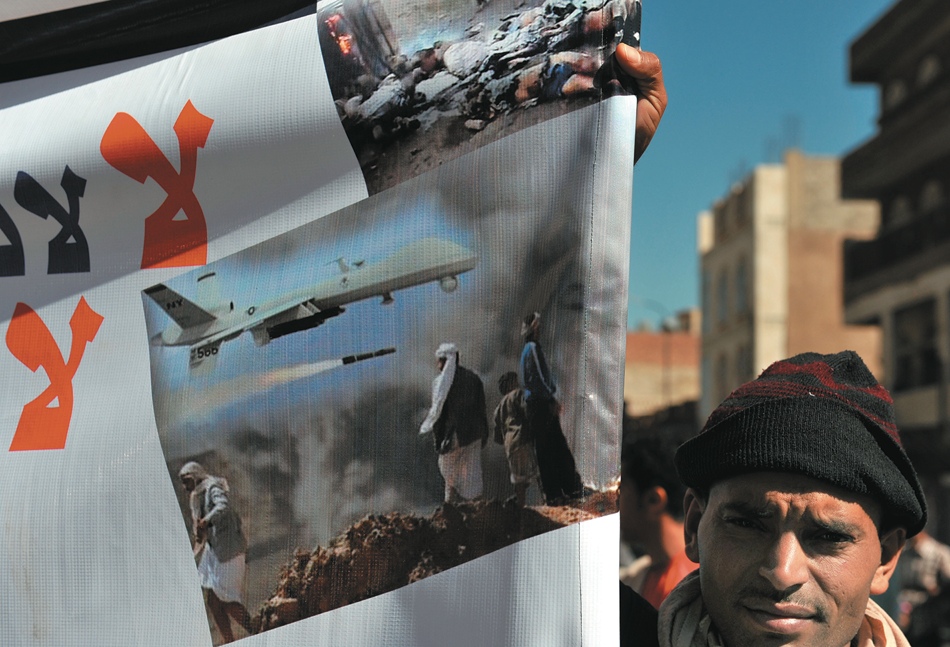As bits and pieces of the Obama administration’s legal justifications for its drone attacks trickle out, what is most striking is their deliberate ambiguity. The recent Justice Department “White Paper,” for example, is meant to give the impression that, at least for US citizen targets, the program has been carefully reviewed by lawyers, but it seems written to maximize the program’s latitude.1 That is obviously troubling for people who believe that the United States should conduct its counterterrorism operations in accordance with international law. It also sets a worrying precedent as other governments inevitably develop their own drone programs.
What does international human rights and humanitarian law require? Not necessarily abolition of the drone program. Yes, there is something disconcerting about drone operators killing their targets from the comfort and safety of their office—making war too easy, as some contend. But discrepancies of power have been inherent in warfare since the advent of the bow and arrow. And from the perspective of avoiding civilian casualties, drones are an advance. Like all weapons, they are only as good as the information available to their operators and their operators’ willingness to abide by legal constraints. But with their pinpoint accuracy and ability to hover for lengthy periods to verify a target and select the most propitious moment for attack, they have the potential to reduce the costs of war to civilians.
However, drones have set off controversy since they do kill civilians and are deployed far from any traditional battlefield where combatants are fighting the United States. Some have suggested they are counterproductive, arousing much resentment in the targeted countries and creating more terrorists than they stop. Killing Taliban and al-Qaeda forces fighting US troops may be a necessary evil in a traditional armed conflict like the one in Afghanistan. But what is the justification in places like Yemen, Somalia, or possibly soon Mali? And where does northwestern Pakistan fit?
There are several conceivable rationales for the use of drones in such places, but the Obama administration has articulated none of them with clarity. One is to say that the United States is fighting a global enemy that sometimes operates from areas that do not look like traditional battlefields. The Obama administration has dispensed with its predecessor’s language of the “global war on terror,” but it cites to much the same effect the nation’s inherent right of self-defense as well as the congressional authorization for using military force to respond to the September 11 attacks. The administration continues to claim legal authority to attack terrorist suspects wherever they are found.
But can the rationale based on war be stretched this far? Should the administration really have the right to attack anyone it might characterize as a combatant against the United States? What if that person is walking the streets of London or Paris? The administration, in a statement by John Brennan, says as a matter of policy that it has an “unqualified preference” to capture rather than kill all targets. But away from a traditional battlefield, international human rights law requires the capture of enemies if possible.2 Failing to apply that law encourages other governments to circumvent it as well; they may summarily kill suspects simply by announcing a “global war” without there being an actual armed conflict. Imagine the mayhem that Russia could cause by killing alleged Chechen “combatants” throughout Europe, or China by killing Uighur “combatants” in the United States. Indeed, China may already be applying this elastic definition of war, as it reportedly considered using a drone to kill a drug trafficker in Burma.
Moreover, even when there is an armed conflict, the laws of war—for example, the additional protocols to the Geneva Conventions—allow targeting only combatants.3 The act of associating with alleged militants is apparently crucial to the administration’s selection of many “signature” strikes, i.e., attacks on people whose identities are not known but who are deemed to be combatants by virtue of their behavior.4 But this is not enough to demonstrate the direct participation in hostilities that distinguishes someone who can be targeted in an armed conflict from a civilian in a mere support role—a driver, cook, doctor, or financier. Such civilians cannot be targeted under international law.
In addition, being an armed man in a war zone—another apparent attribute justifying a “signature” strike—is not enough to make someone a combatant in societies where men routinely bear arms. In cases of doubt, the laws of war—for example, Article 50(1) of the First Additional Protocol to the Geneva Conventions—require presuming that people are not combatants.
Similarly, affiliation with an armed group in Yemen or Somalia may show only that the person is fighting the local government, not the United States. The administration theoretically might claim in such cases that it is battling combatants on behalf of the local government—a second possible rationale for drone attacks, and something like the explanation it has given for providing actionable intelligence from drone surveillance for conventional attacks by French forces in Mali. But that is not how the administration has justified the controversial program of using drones to conduct its own targeted killings in distant countries.
Advertisement
A third possible rationale—one that applies even if someone is not a combatant against the United States—would be to target the person under the international standards applying to police actions to stop a crime from being committed. Though written for domestic police operations, these standards would apply to activities abroad with the consent of a foreign government. But the use of lethal force in such actions would be permissible only as a last resort if the person poses an imminent threat.5
This administration does speak about imminent threats, but it does so in a slippery way that typically jumps between two different concepts of international law. Under the law of self-defense, recognized for example in Article 51 of the UN charter, a nation is entitled to use military force to stop an imminent threat; and as the administration likes to point out, it does not have to wait until the threat has been realized. However, that rule governs the circumstances when a nation can go to war and, hence, target combatants. It does not say when a government is entitled to use lethal force as a matter of police powers outside of a war setting.
If the rationale of policing is to be used, there is good reason to require that an “imminent” threat is really imminent. For example, we accept that the police may have to kill someone who is holding a gun to a hostage’s head, but it makes a mockery of the imminence requirement if we allow the police to shoot people who might, at some future time, commit such crimes. Yet that is what the administration has effectively done by characterizing every alleged “operational leader” of al-Qaeda or its “associated forces” as always posing an “imminent threat,” in the language of the Justice Department’s recent “White Paper.” In the case of US citizens, the administration adds that the target must have engaged in past attacks against the United States and not renounced his or her membership in al-Qaeda. But the police power to stop an imminent threat should not be transformed into the power to summarily execute past offenders.
As for when killing is the “last resort” to stop an imminent threat, the administration never defines what degree of risk US forces must accept before it considers capture not to be feasible. If the answer is little or no risk, its “preference” for capture may quickly become converted into the reality of killing.
Whatever the rules governing drone attacks, many object to the covert, unilateral way the administration decides who should be killed. In the heat of battle, that is a necessity. But drone targets are typically selected over lengthy periods, with more than enough time for independent scrutiny. Under US law, the executive branch cannot even secure a wiretap without court oversight, so why should it be allowed to select drone targets unilaterally? Senator Dianne Feinstein has thus put forward the idea of a drone court similar to the courts that review wiretap applications under the Foreign Intelligence Surveillance Act (FISA).
But replicating the FISA courts would provide little by way of effective control because, by their nature, they must be kept secret from the target, so they provide no opportunity for an independent attorney to challenge the government’s claims. At least for wiretaps the law is reasonably settled. But the administration, as we have seen, seems to accept in only vague terms the law governing drone attacks. In the absence of an adversarial process, a judge cannot be counted on to challenge the administration’s permissive interpretation of the law.
Moreover, a drone court could at most approve placing someone on a kill list, not whether the circumstances of a prospective attack, including the risk to civilians in a changing situation, would be lawful. That would require a determination of the sort that a court can’t possibly undertake in advance. In any event, most proposals for drone courts envision them being used only for targeted US citizens—not much help to the great majority of targets from other nationalities. Though of no help to those killed, permitting after-the-fact lawsuits against the government would be a better way to allow the courts to define the limits of the law. But the administration has blocked such suits through various claims of secrecy.
Advertisement
At the very least, the CIA’s drone program, the source of most of the controversy, should be transferred to the Pentagon, with its stronger tradition of accountability to the law. That should be accompanied by a new policy of transparency about which laws govern drone attacks, and about why people are targeted, as well as prompt investigation whenever there is a credible allegation of civilian casualties or inappropriate targeting. The aim should be to open to independent scrutiny—by Congress, the courts, the press, and the public—many aspects of the drone program that have unjustifiably been kept secret (however open that secret may be) and treat drone attacks like normal military or police operations.
Any program that kills on the basis of secret intelligence risks abuse. The administration could go a long way toward minimizing the possibility of illegal killings—and discouraging others from acting in kind—if it explicitly recognized clear limits in the law governing drone attacks and allowed as much independent consideration of its compliance as possible.
This Issue
April 4, 2013
Surrealism Made Fresh
Afghanistan: The Way to Peace
-
1
The Justice Department “White Paper” was leaked to NBC News in early February. ↩
-
2
See the UN International Covenant on Civil and Political Rights, Article 6: “Every human being has the inherent right to life…. No one shall be arbitrarily deprived of his life.” The US has ratified the ICCPR. ↩
-
3
See the First Additional Protocol of 1977, in particular Articles 48–51. The US has signed but not ratified the protocol, but these sections are binding on the US as a matter of customary international law, as reflected in the International Committee of the Red Cross’s List of Customary Rules of International Law: “Rule 1. The parties to the conflict must at all times distinguish between civilians and combatants. Attacks may only be directed against combatants. Attacks must not be directed against civilians.” ↩
-
4
Jo Becker and Scott Shane, “Secret ‘Kill List’ Proves a Test of Obama’s Principles and Will,” The New York Times, May 29, 2012. See also Daniel Klaidman, Kill or Capture: The War on Terror and the Soul of the Obama Presidency (Houghton Mifflin Harcourt, 2012), p. 41. ↩
-
5
The relevant standards governing such actions come from the UN Basic Principles on Use of Force and Firearms by Law Enforcement Officials, issued in 1990. This is not a treaty but a set of principles that are widely regarded as stating the relevant law. ↩





